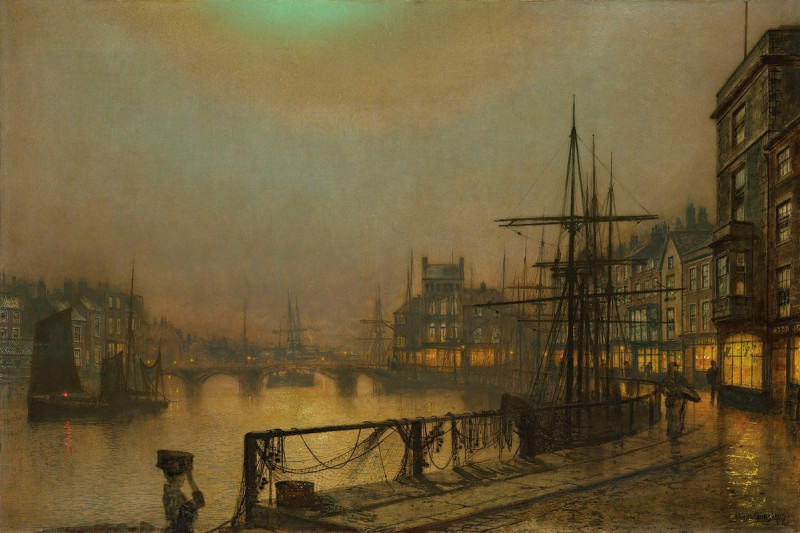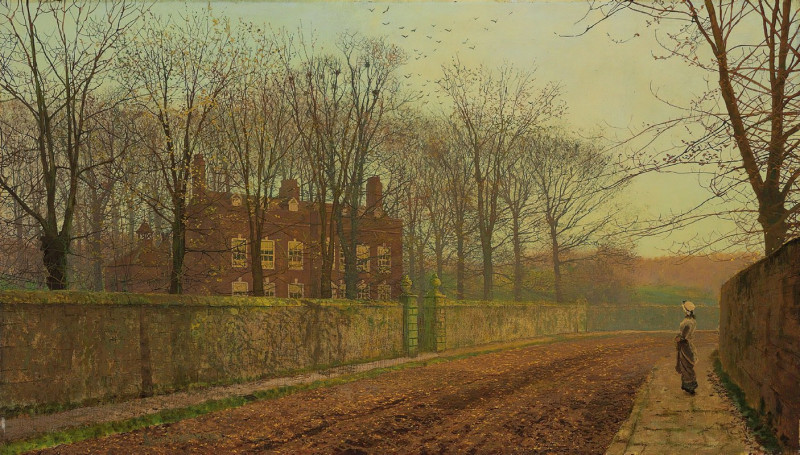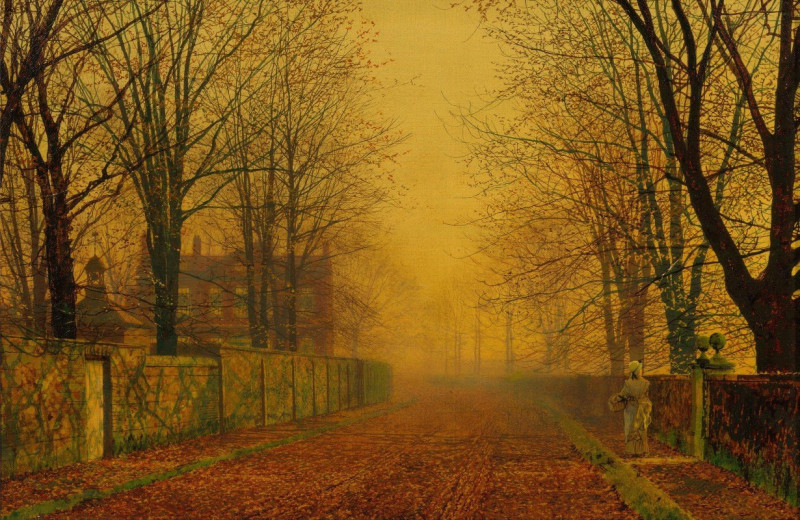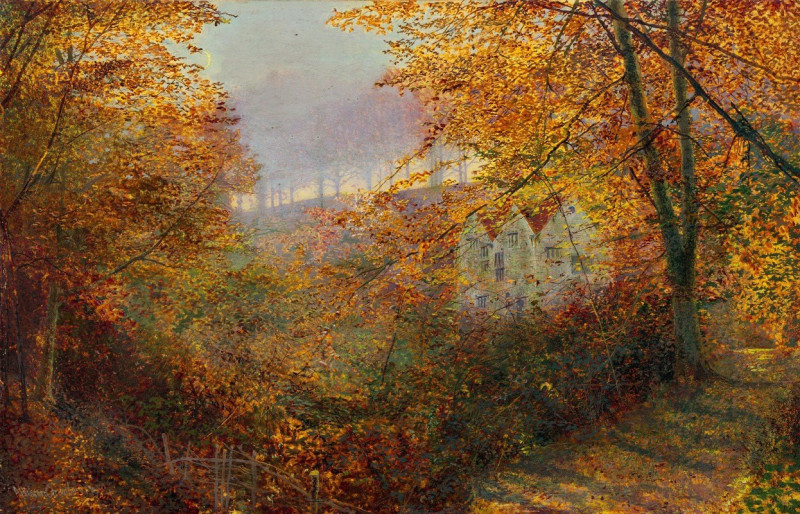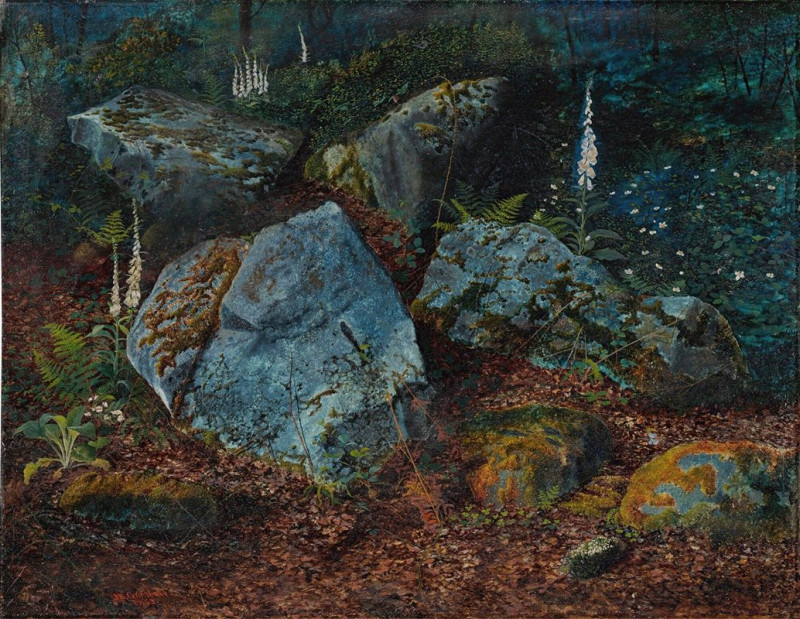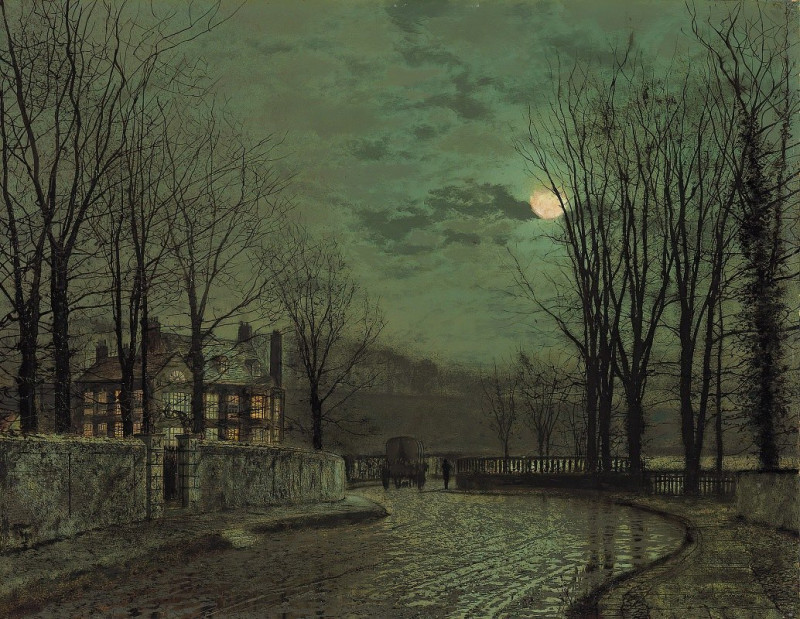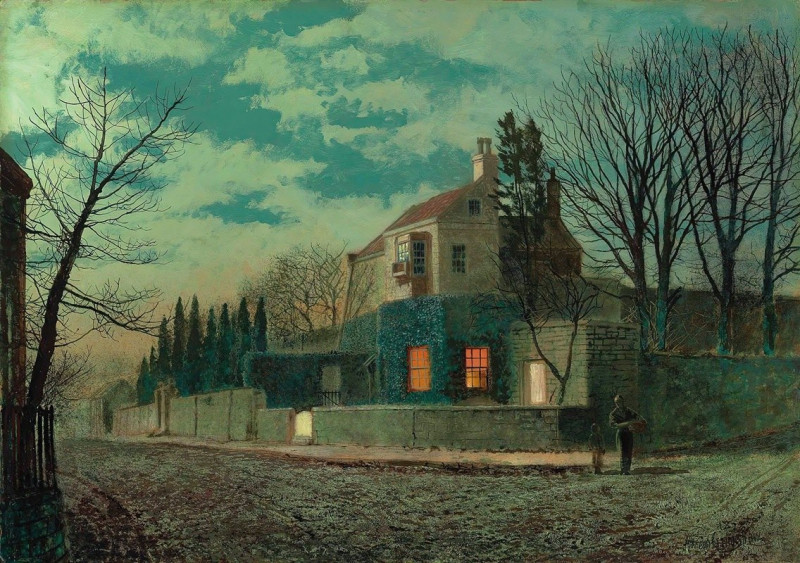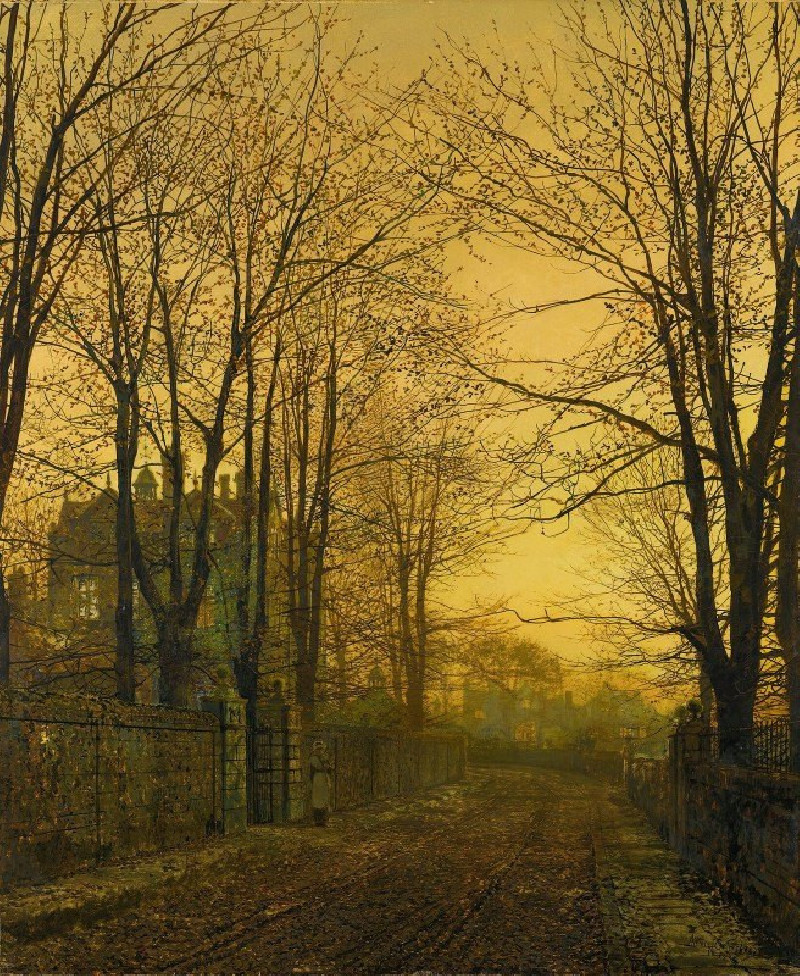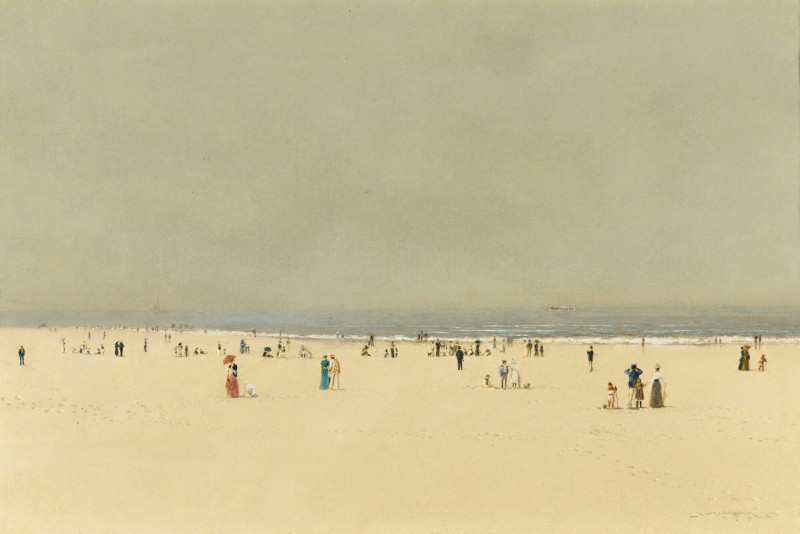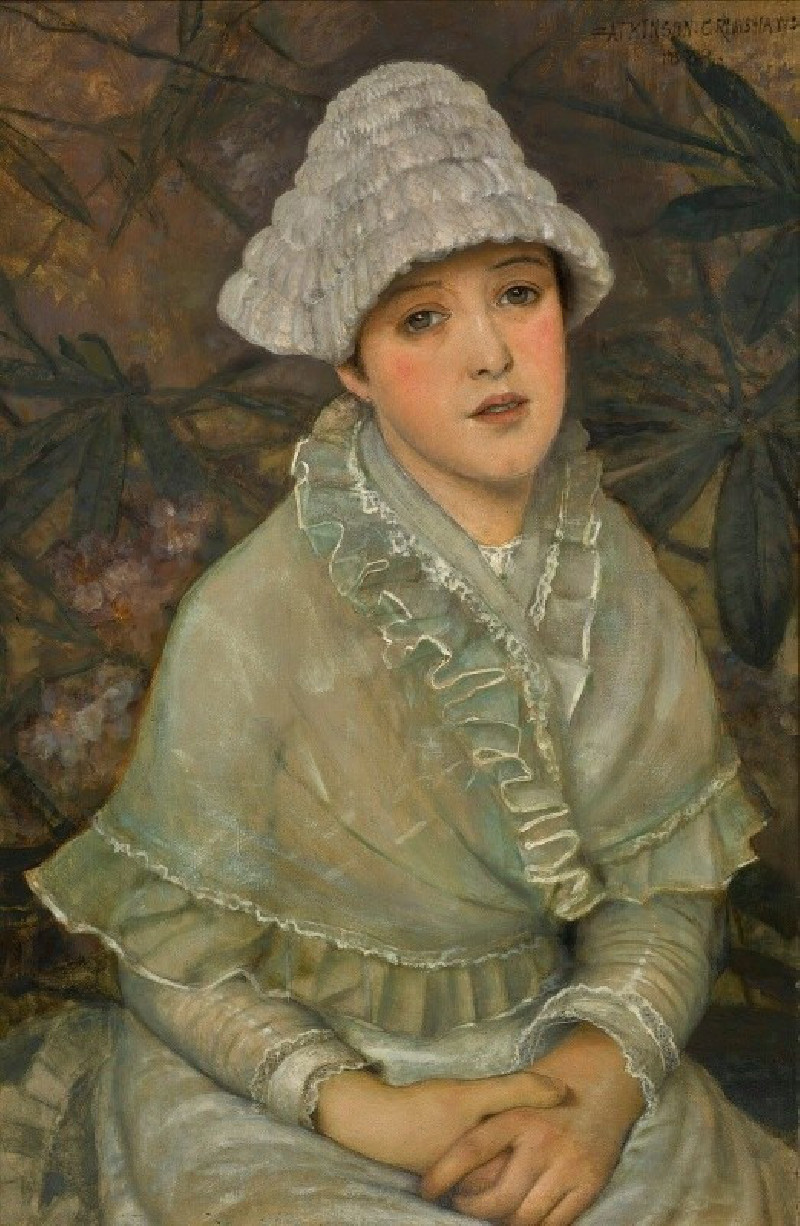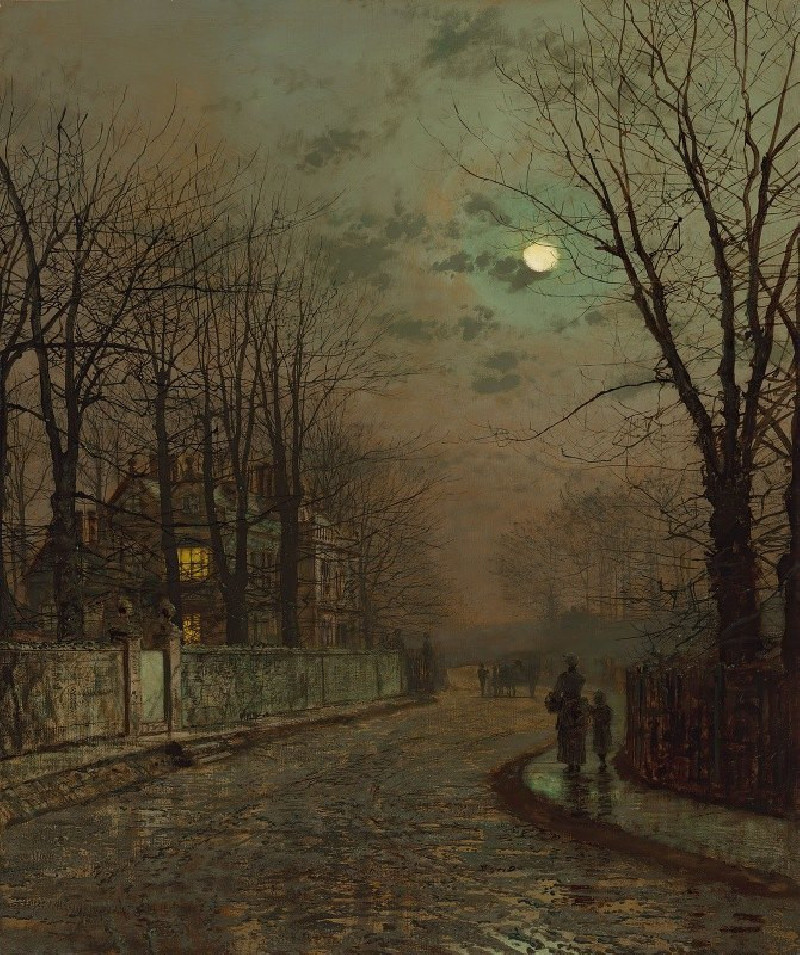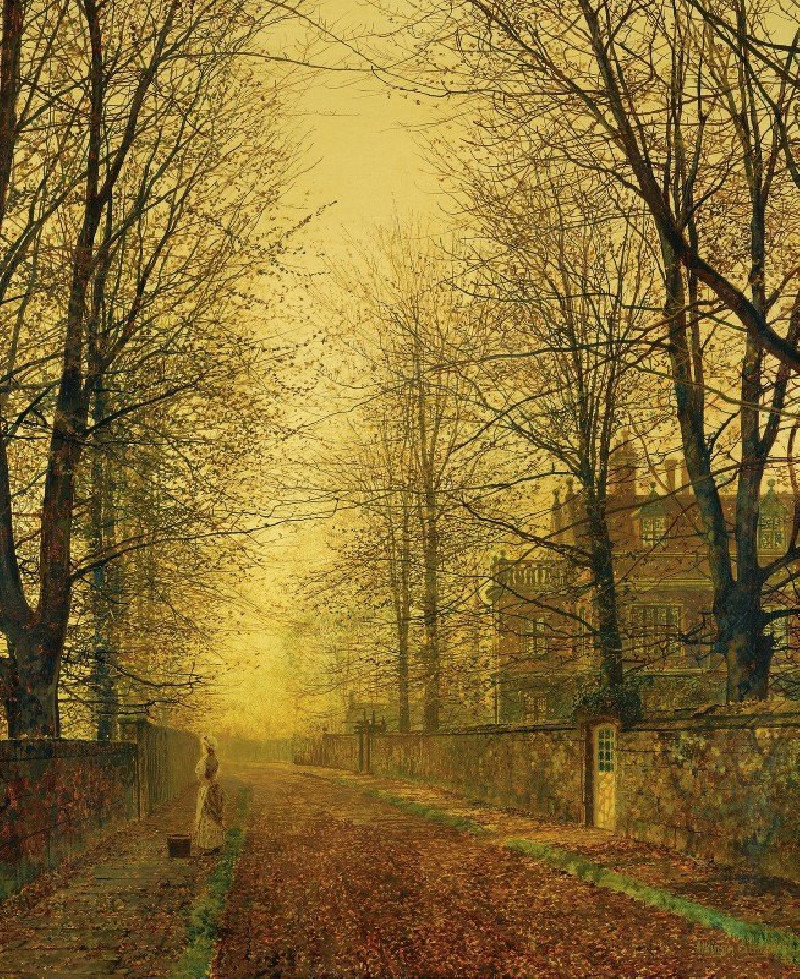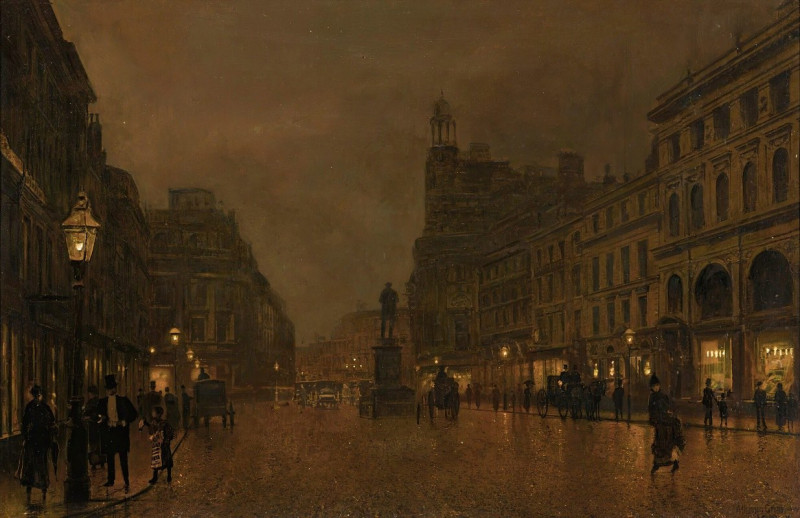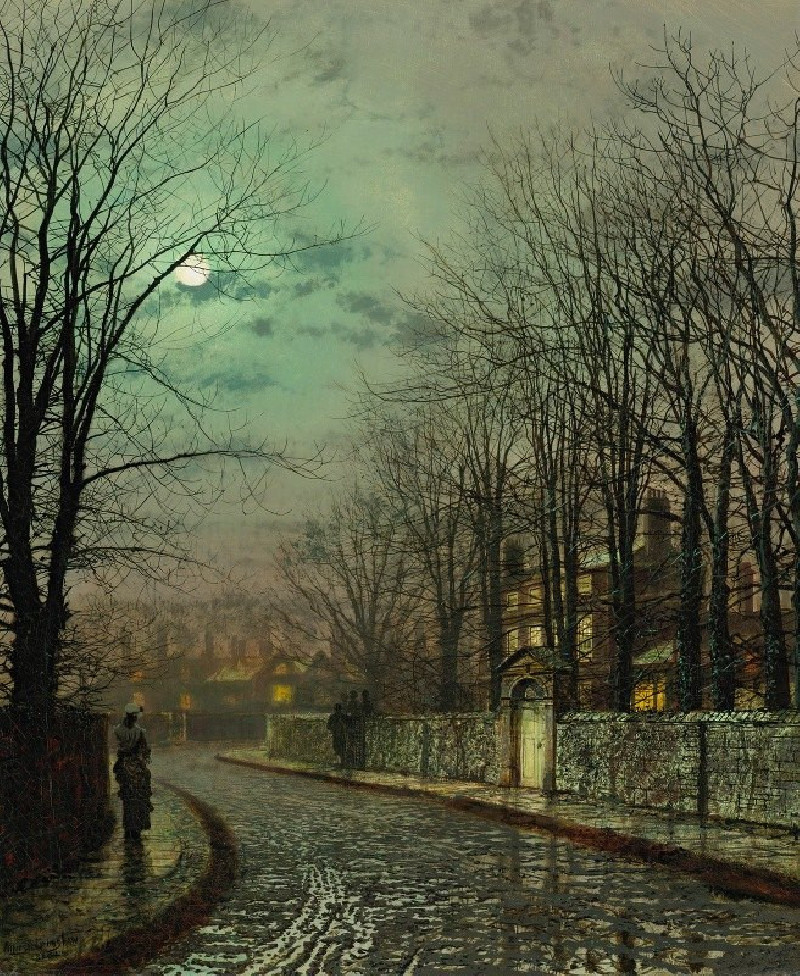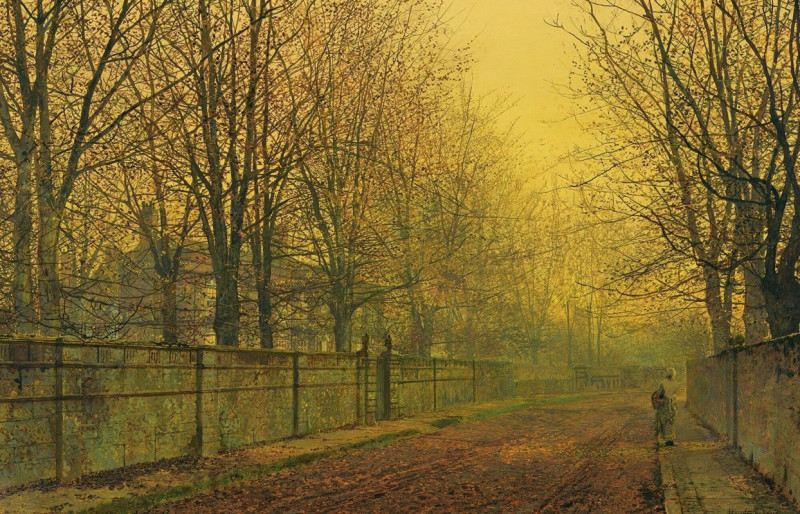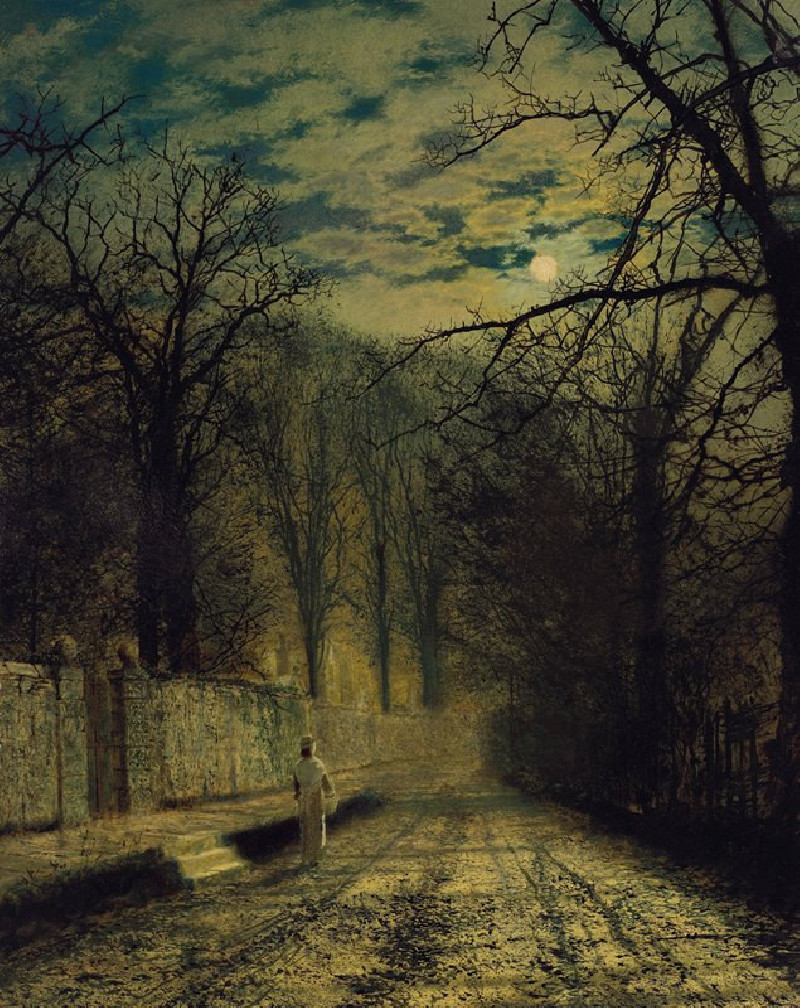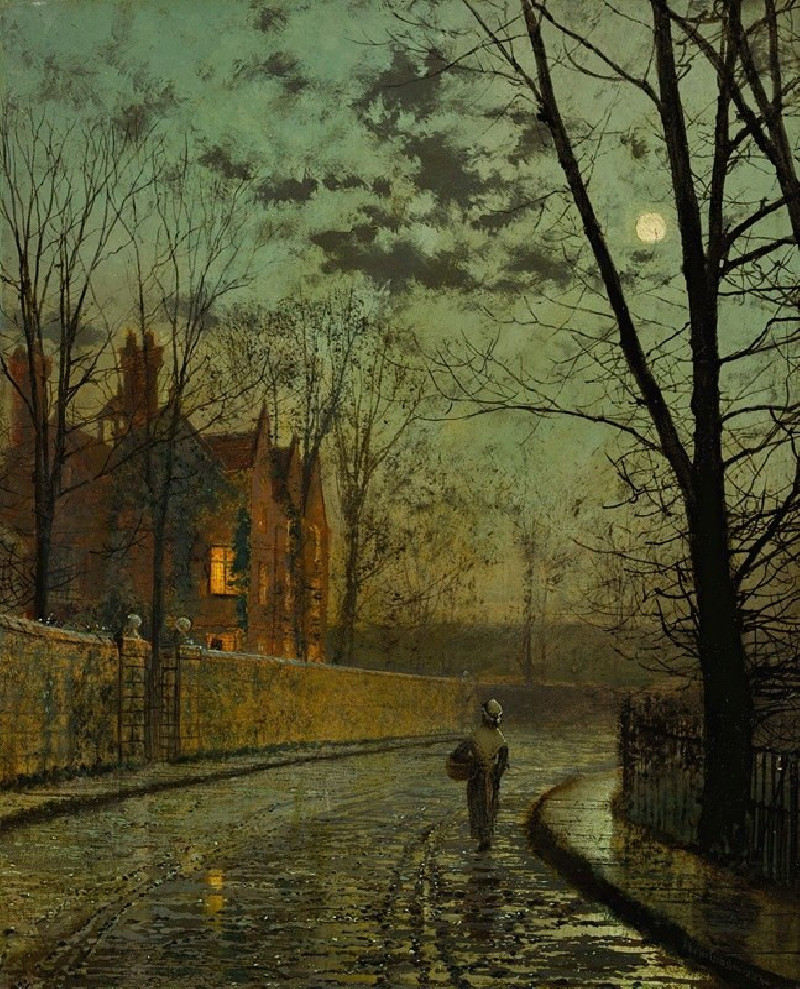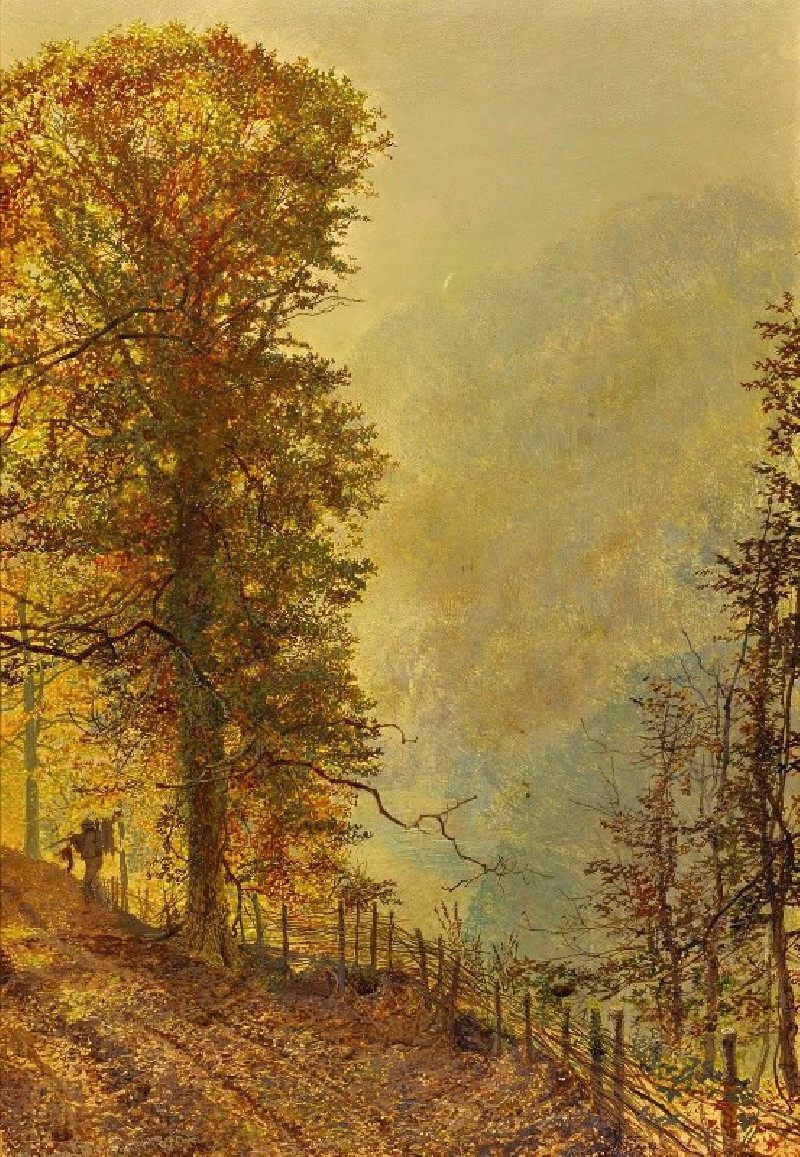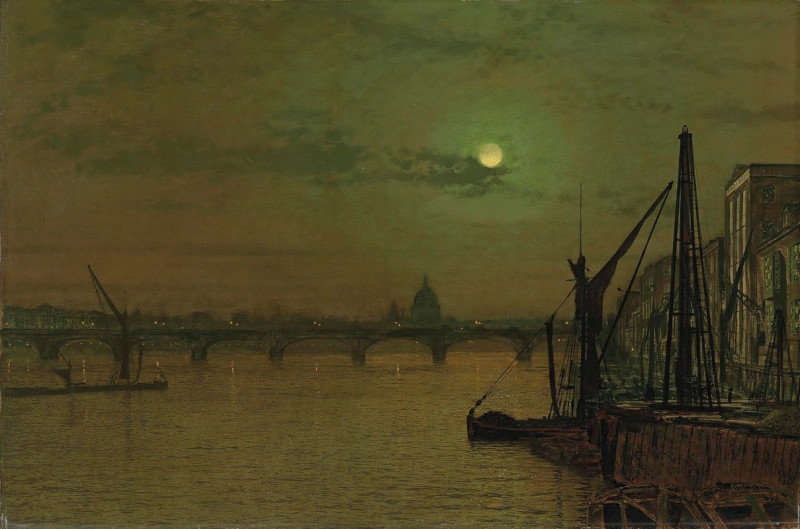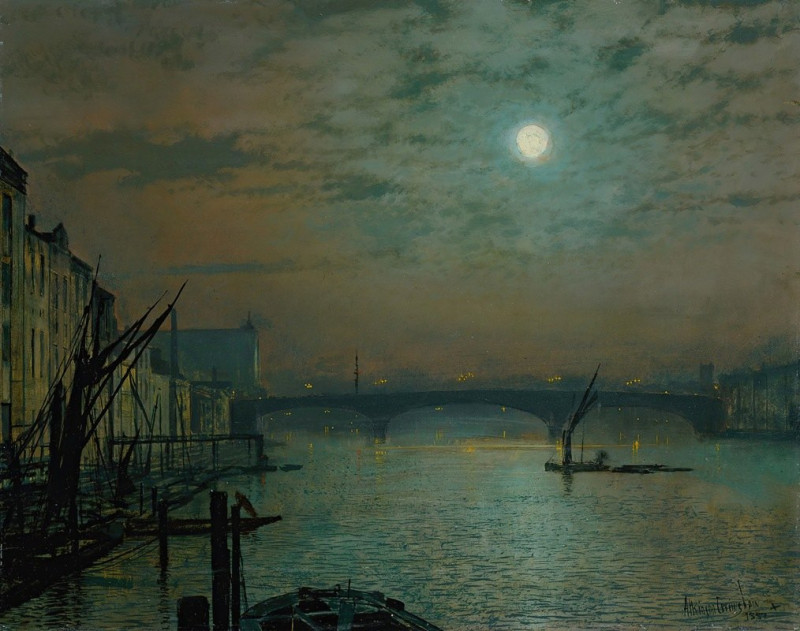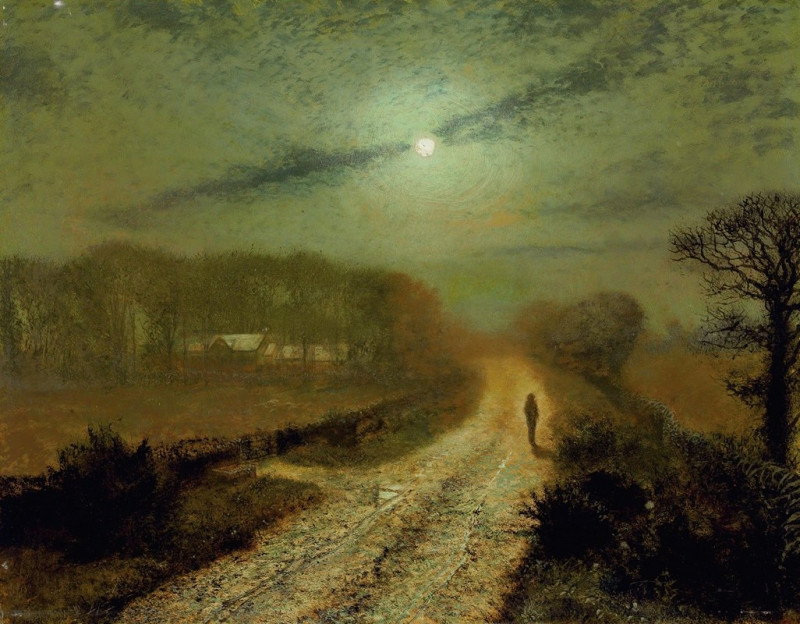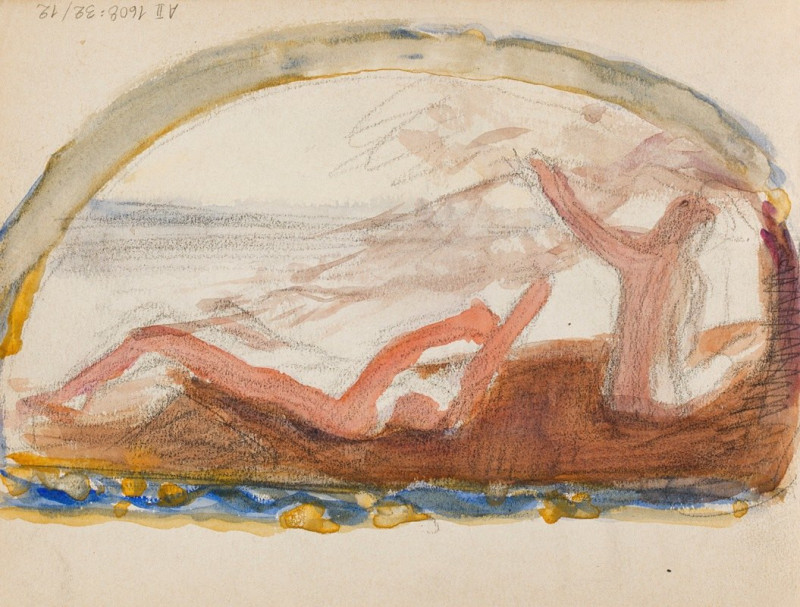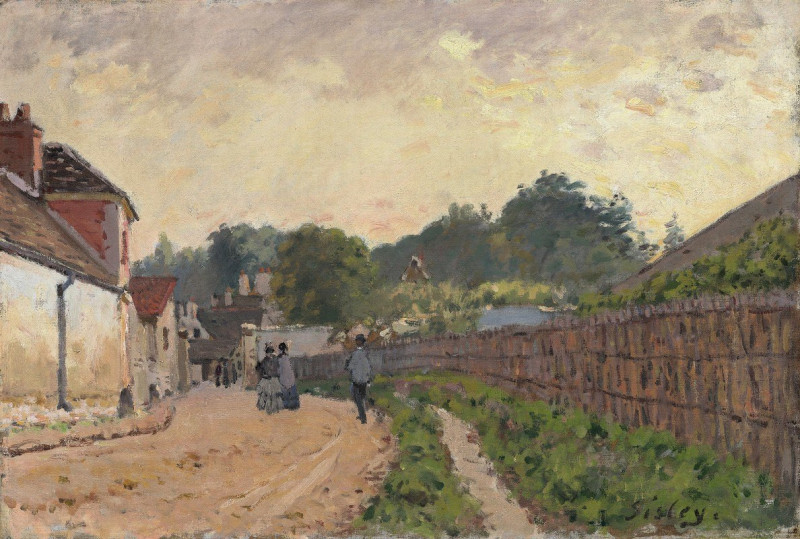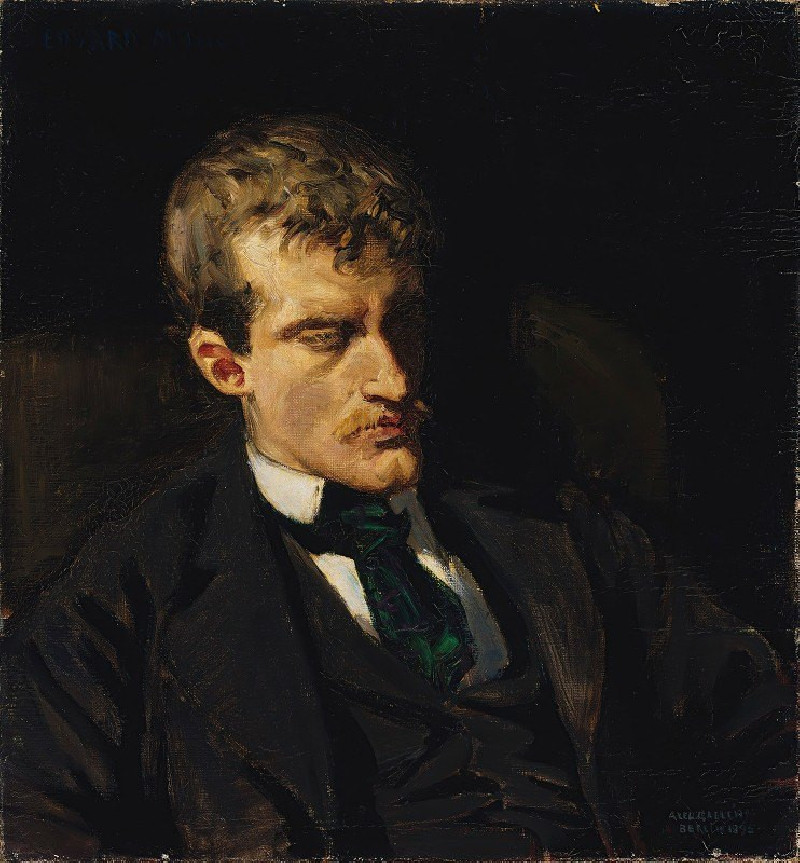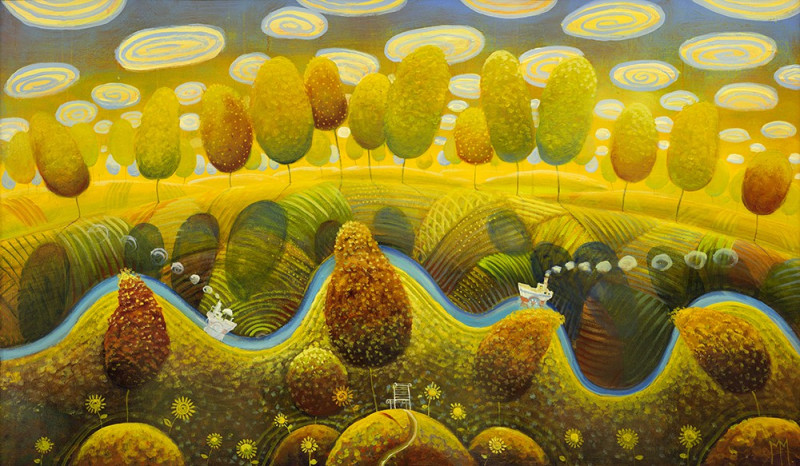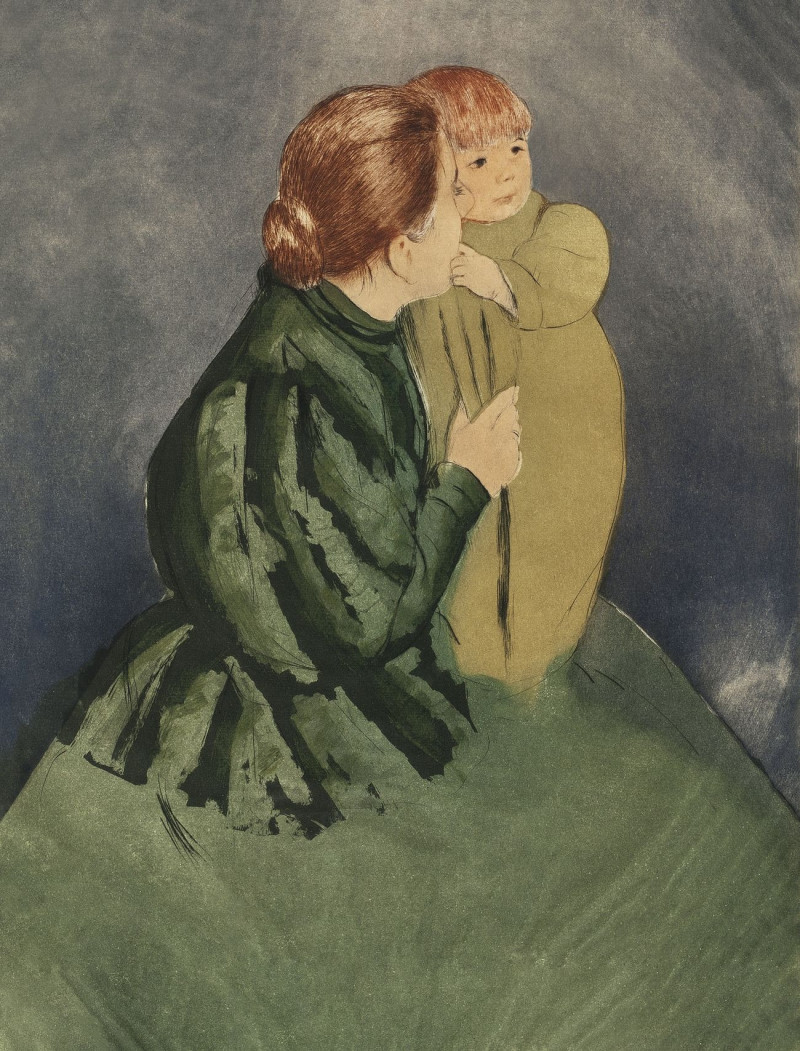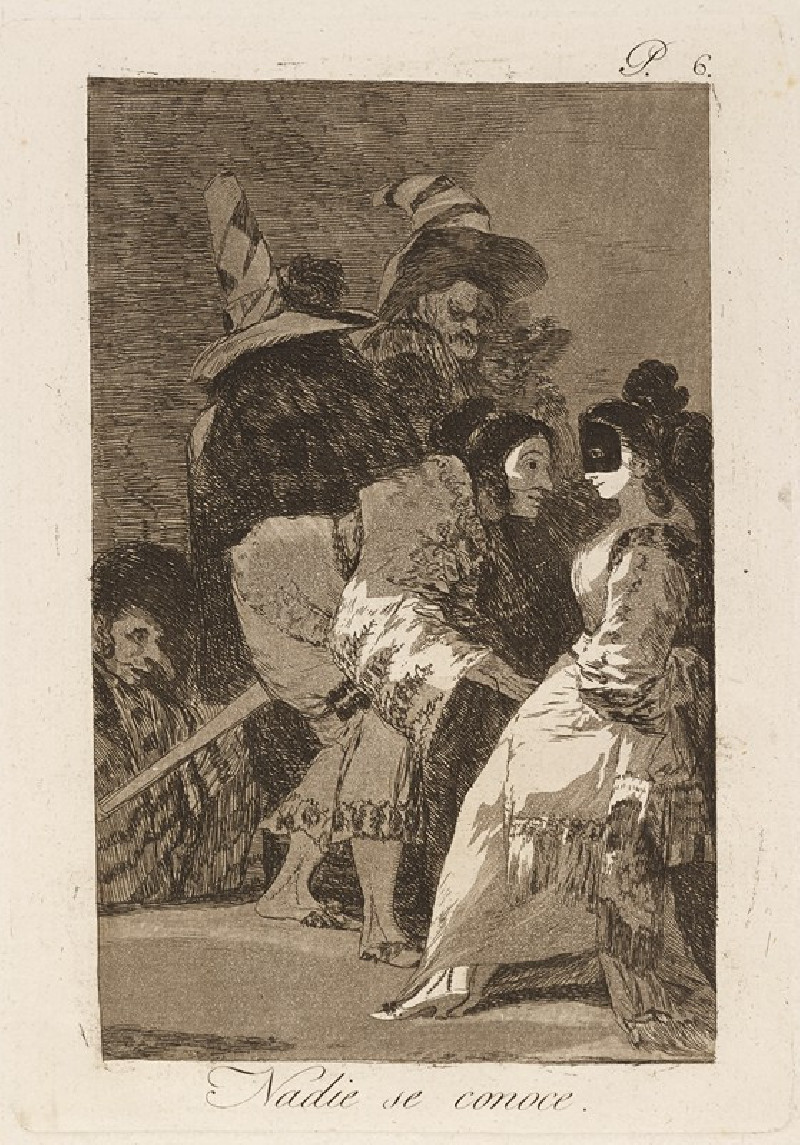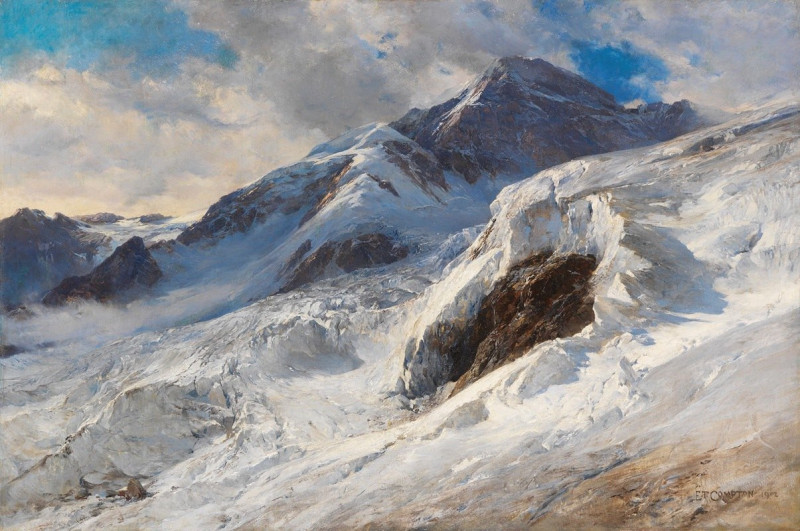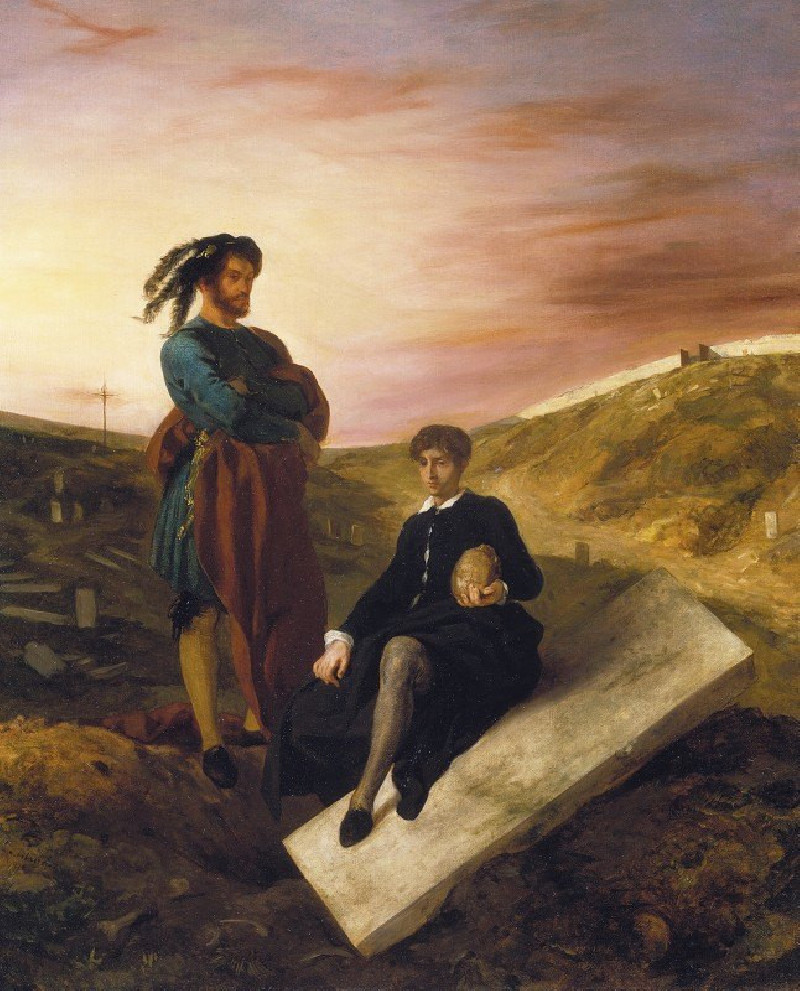Roundhay Lake (1877)
Technique: Giclée quality print
Recommended by our customers
More about this artwork
John Atkinson Grimshaw, a renowned Victorian artist, is best known for invoking the enchanting essence of the English landscape under evening skies and glimmering twilight. "Roundhay Lake," painted in 1877, stands as a quintessential example of his talent for blending precise detail with evocative atmospheres.This atmospheric painting captures the misty environs of Roundhay Lake, located just outside Leeds. The scene is draped in a captivating fog that softens and blurs the landscape, lending a dreamlike quality that Grimshaw masterfully portrays. The composition is dominated by stark, leafless trees framing the lake, their bare branches etching intricate patterns against the muted greenish-gray sky. This skeleton of winter branches not only serves as a reminder of the dormant season but also adds an eerie beauty that is distinctively Grimshaw’s style.In the foreground, the figures of a couple are subtly integrated, giving scale to the landscape and adding a human element to the natural scenery. They stand close together, perhaps reflecting on the serene view or lost in a quiet conversation, their presence adding a layer of narrative and emotion to the scene. A rustic wooden fence lines the path, leading the viewer's eye into the depth of the fog-enveloped lake beyond.Artfully capturing the interplay of light and shadow, Grimshaw's "Roundhay Lake" invokes a sense of peaceful solitude and mystic calm, inviting viewers to delve into a world where nature’s quiet moments are beautifully immortalized.
Delivery
Returns
John Atkinson Grimshaw was an English Victorian-era artist best known for his nocturnal scenes of urban landscapes. Today, he is considered one of the great painters of the Victorian era, as well as one of the best and most accomplished nightscape and townscape artists of all time. He was called a "remarkable and imaginative painter" by the critic and historian Christopher Wood in Victorian Painting (1999).


